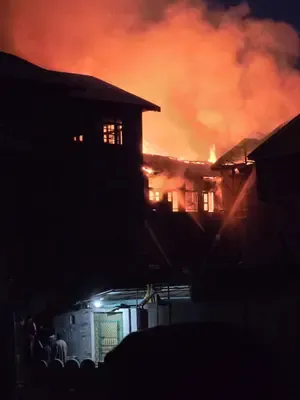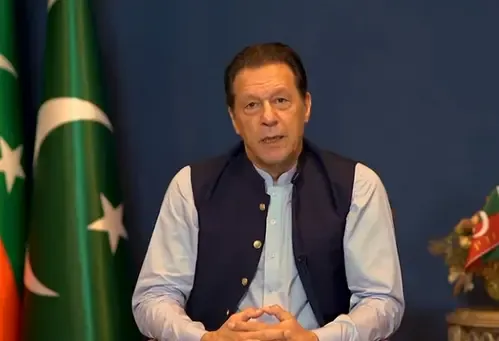What Impact Did the 6.8 Magnitude Aftershock Have on Russia's Kamchatka?

Synopsis
Key Takeaways
- A 6.8 magnitude aftershock struck Kamchatka on August 3.
- It occurred 277 km from Petropavlovsk-Kamchatsky.
- No significant tsunami is expected, but caution is advised.
- Seismic activity has increased following a major quake on July 30.
- Shallow earthquakes pose higher risks of damage.
Vladivostok, Aug 3 (NationPress) A 6.8 magnitude aftershock occurred off the coast of Russia's Kamchatka Peninsula in the Pacific Ocean on Sunday, as reported by the regional branch of the Ministry of Emergency Situations via social media.
The seismic event took place at 17:37 local time (0537 GMT), approximately 277 km from Petropavlovsk-Kamchatsky, the regional capital, at a depth of 26 km.
The Kamchatka Tsunami Warning and Monitoring Center stated that the tsunami waves produced by the earthquake are not anticipated to exceed 19 cm.
Even though the wave height is minimal, local emergency services have advised residents to maintain distance from the coastline as a precautionary measure.
Additionally, the ministry has recommended that vessels in nearby waters, including those anchored in bays with wide entrances, should navigate seaward beyond the 50-meter isobath and travel perpendicular to the coastline, as reported by Xinhua News Agency.
Earlier that day, a strong earthquake of 6.7 magnitude was recorded in Russia's Kuril Islands, according to the German Research Centre for Geosciences (GFZ). Initially assessed at 6.35 magnitude with a shallow depth of 10 kilometers (6.2 miles), the findings were later revised.
The Pacific Tsunami Warning Center measured this earthquake at 7.0 and confirmed that no tsunami warning was issued post-quake. This recent tremor follows another earthquake of 6.2 magnitude documented late Friday east of the Kuril Islands, as reported by India's National Centre for Seismology (NCS) on Saturday.
The seismic activity follows a significant 8.7 magnitude earthquake that occurred on July 30, now recorded as the sixth strongest globally. Despite the magnitude, the Kremlin verified that there were no casualties in Russia.
Since the quake on July 30, the area has experienced over 125 aftershocks with magnitudes of 4.4 or higher. Among these, at least three have surpassed 6.0, including a notable 6.9-magnitude aftershock that occurred approximately 45 minutes after the initial earthquake.
Strong aftershocks are still being felt across the Kuril Islands, and seismic experts have noted that such aftershocks are typically most intense and frequent in the immediate hours to days following a major earthquake. Their frequency and intensity usually decrease over time.
Shallow earthquakes, like the one experienced on Sunday, are generally deemed more hazardous than deeper ones due to their proximity to the Earth's surface, which can result in more severe ground shaking and raise the risk of structural damage and casualties.









